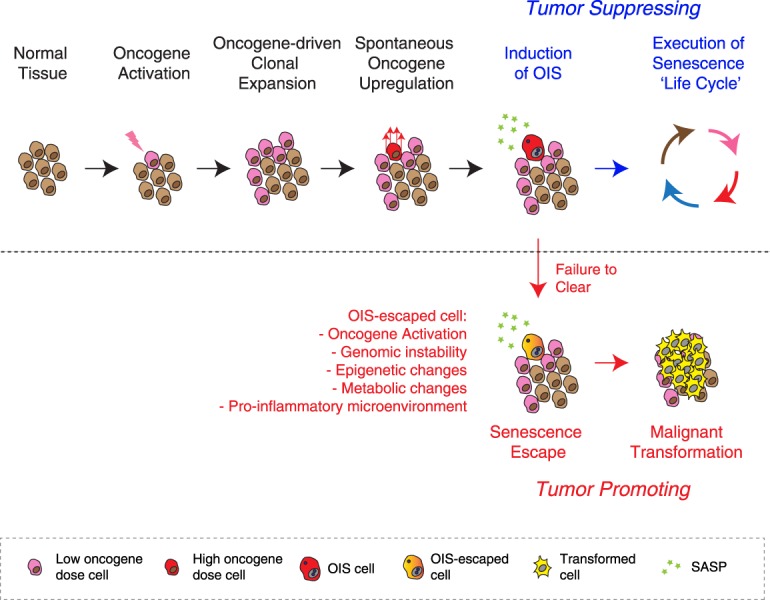Figure 2.

OIS as a model of spontaneous up-regulation of somatically mutated oncogenic signaling. Using oncogenic Ras as an example, an age-dependent increase of somatic mutation of oncogenes and their clonal expansion are common, but high-levels of oncogenic signaling are necessary for both OIS and full malignant transformation. Typically, spontaneous up-regulation of oncogenic signaling (to the levels sufficient for malignancy) triggers the OIS program, which is tumor-suppressive as long as the “senescence life cycle” is executed to completion. Conversely, failure to clear OIS cells can be tumor-promoting, as these cells are at risk of senescence escape, having acquired tumor-facilitating cellular changes as well as having shaped a protumorigenic microenvironment.
